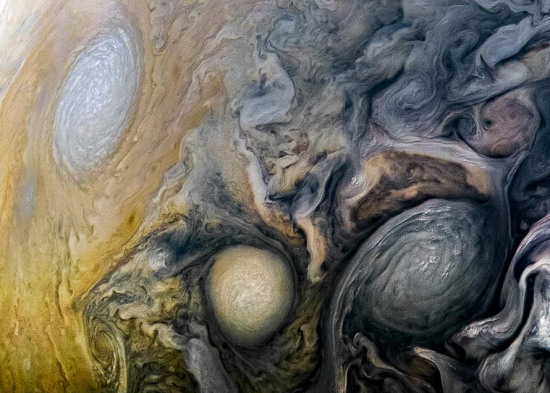
See intricate cloud patterns in the northern hemisphere of Jupiter in this new view taken by NASA's Juno spacecraft. The color-enhanced image was taken on April 1 at 2:32 a.m. PST (5:32 a.m. EST), as Juno performed its twelfth close flyby of Jupiter. (Photo/NASA)
Space physicists used existing data and advanced computer models to provide additional evidence that Jupiter's moon Europa may have the ingredients to support life.
In a study published on Monday in the journal Nature Astronomy, researchers led by Jia Xianzhe at the University of Michigan in Ann Arbor reexamined data collected by the U.S. space agency NASA's Galileo spacecraft in 1997, finding that the moon's subsurface liquid water reservoir may be venting plumes of water vapor above its icy shell.
"The data were there, but we needed sophisticated modeling to make sense of the observation," Jia said.
Previously, the Galileo team didn't suspect the spacecraft might be grazing a plume erupting from the icy moon, about 200 kilometers above Europa's surface, during a flyby.
But Jia's team examined the information gathered during that flyby 21 years ago, and high-resolution magnetometer data revealed a brief, localized bend in the magnetic field.
Scientists had learned from exploring plumes on Saturn's moon Enceladus that material in plumes becomes ionized and leaves a characteristic blip in the magnetic field. It also happened on Europa, according to Jia.
The findings are good news for NASA's Europa Clipper mission, which may launch as early as June 2022. From its orbit of Jupiter, Europa Clipper will sail close by the moon in rapid, low-altitude flybys.
If plumes are indeed spewing vapor from Europa's ocean or subsurface lakes, Europa Clipper could sample the frozen liquid and dust particles.


















































